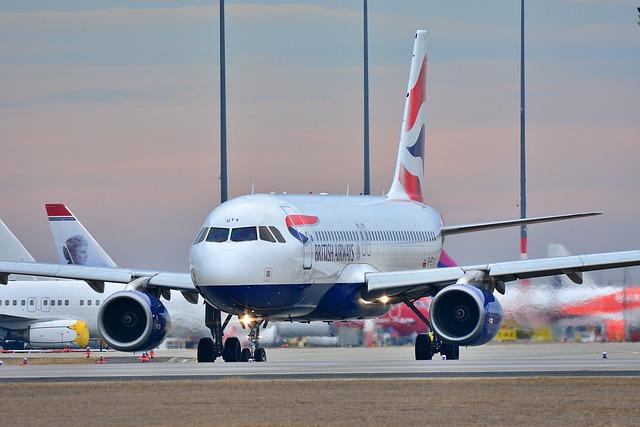Flight Disruptions at Major US Airports Amid Ongoing Federal Government Shutdown
As the federal government shutdown extends, numerous prominent US airports are set to scale back their flight operations this Friday. The primary cause stems from the furlough of essential Federal Aviation Administration (FAA) personnel, including air traffic controllers and safety inspectors, which has forced airlines and airport management to reduce flight schedules to maintain safety standards and manage limited resources. Passengers are strongly encouraged to verify their flight status directly with airlines and prepare for possible delays or cancellations.
Airports experiencing notable flight cutbacks include:
- John F. Kennedy International Airport (JFK), New York
- Los Angeles International Airport (LAX), California
- O’Hare International Airport (ORD), Chicago
- Dallas/Fort Worth International Airport (DFW), Texas
- Denver International Airport (DEN), Colorado
| Airport Code | City | Projected Flight Reduction |
|---|---|---|
| JFK | New York | Approximately 15% |
| LAX | Los Angeles | Around 12% |
| ORD | Chicago | Estimated 10% |
| DFW | Dallas/Fort Worth | About 8% |
| DEN | Denver | Near 7% |
Effects on Passengers and Airline Operations Across Impacted Airports
Travelers nationwide are encountering significant challenges as the government shutdown leads to reduced staffing levels, resulting in widespread flight cancellations and delays. Many passengers have reported receiving last-minute alerts, prompting urgent efforts to find alternative travel options. This disruption has increased demand for ride-share services and nearby accommodations, adding financial strain and logistical complications, especially during peak travel seasons. Airlines are striving to maintain clear communication, but the volume of affected flights continues to overwhelm customer support systems.
Airlines are dynamically adjusting their operations, prioritizing flights with higher passenger loads while suspending less profitable routes. Several airline hubs have implemented temporary cutbacks in departures to cope with the staffing shortages. Below is an overview of key airline operational changes as of Friday:
| Airline | Number of Cancellations | Most Affected Hubs | Operational Adjustments |
|---|---|---|---|
| Delta Air Lines | Over 120 | Atlanta, Salt Lake City | Reduced overnight staffing; consolidation of hub operations |
| American Airlines | 95 | Dallas/Fort Worth, Miami | Limited check-in counters; delayed flight departures |
| United Airlines | 80 | Chicago OŌĆÖHare, Denver | Cancelled regional flights; reallocation of aircraft |
- Longer wait times at security checkpoints and boarding gates are anticipated throughout the weekend.
- Flight rerouting strategies are being employed to alleviate congestion and maintain essential connections.
- Despite limited resources, passenger safety remains paramount, with contingency protocols activated in collaboration with airport authorities.
Government and Agency Responses to Airport Service Challenges
In response to escalating disruptions at key US airports, federal and state officials have mobilized efforts to lessen the impact on travelers. The Department of Transportation has reassured the public that contingency measures are operational to uphold safety and facilitate air traffic flow despite reduced staffing levels. Local governments are working closely with airport administrations to deploy additional support personnel and enhance communication with affected passengers.
Pressure mounts on Congress to resolve the funding deadlock promptly. Transportation Secretary Elaine Thompson emphasized in a recent briefing: “Our priority is to minimize disruptions and maintain safety during this difficult period.” Bipartisan lawmakers have introduced emergency funding proposals aimed at restoring full operational capacity. Key government actions include:
- Federal Aviation Administration (FAA): Implementing backup air traffic control protocols with limited staff.
- Transportation Security Administration (TSA): Deploying additional supervisors to streamline passenger screening.
- State Authorities: Activating National Guard units to assist airport operations.
- Congressional Committees: Negotiating emergency budget solutions to end the shutdown.
| Official | Position | Summary of Statement |
|---|---|---|
| Elaine Thompson | Transportation Secretary | Reaffirmed safety as the top priority amid shutdown |
| James Rodriguez | FAA Director | Activated contingency plans for air traffic control staffing |
| Linda Park | TSA Deputy Administrator | Increased supervisory presence to expedite security screenings |
Essential Travel Advice for Passengers Facing Flight Changes This Friday
Passengers are urged to verify their flight status promptly and prepare for possible delays or cancellations. Utilizing airline mobile apps and subscribing to real-time alerts can provide timely updates. Arriving at airports earlier than usual is advisable to navigate increased crowds and reduced staffing. To ease travel stress, pack vital items such as medications, chargers, and important documents in carry-on luggage, anticipating potential disruptions in baggage handling.
Recommended tips include:
- Regularly confirm your flight status before heading to the airport.
- Plan for alternative waiting options, such as airport lounges or nearby accommodations.
- Familiarize yourself with your airlineŌĆÖs cancellation and refund policies.
- Keep travel documents and contact information accessible for quick customer service interactions.
| Airport | Projected Flight Reductions | Nearby Alternative Airports |
|---|---|---|
| Chicago O’Hare (ORD) | Up to 25% | Midway (MDW), Milwaukee (MKE) |
| Los Angeles (LAX) | 20% to 30% | Long Beach (LGB), Burbank (BUR) |
| New York JFK | Approximately 15% | LaGuardia (LGA), Newark (EWR) |
Summary and Final Recommendations
With the federal government shutdown continuing to disrupt aviation services, travelers should remain vigilant and stay updated on flight changes at affected US airports this Friday. Airlines and airport authorities are actively working to provide timely information, but passengers must monitor official channels closely to minimize inconvenience. Given the fluid nature of the situation, further operational adjustments may occur as the shutdown persists. For the most current updates, travelers should consult airline websites and airport announcements before embarking on their journeys.







